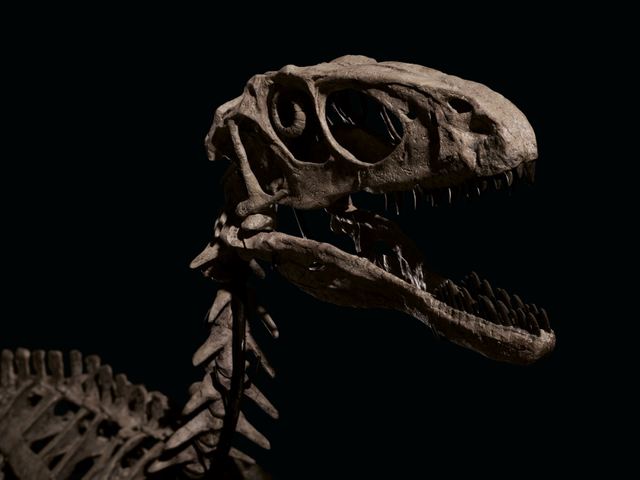Dinosaur That Inspired Jurassic Park’s Raptor Sells For $12.4M
Hold on to your butts! In the wake of a 2020 monster bidding war over the skeletal remains of a Tyrannosaurus rex nicknamed Stan — which eclipsed its expected value of $8 million, selling for almost four times that much — another prehistoric luminary has hit it big at auction. On Thursday evening, May 12, Christie’s sold “The Raptor” (aka Hector) for a whopping $12 million, twice its high estimate. The buyer’s name was not disclosed.

Named for the mythological Trojan warrior, Hector is the most complete Deinonychus skeleton ever found, and the only one remaining in private hands. Given the feverish appetite for his Jurassic Park co-star in 2020, and the rarity of the fossil bones, the hammer price isn’t all that surprising. Paleontologist John Ostrom coined the name Deinonychus in 1969, which translates to “terrible claw,” referring to the brutal claw on each of the dinosaur’s feet, which actor Sam Neill memorably used to terrify a child in his role as Dr. Alan Grant in the original 1993 version of Jurassic Park. Deinonychus were adapted as “Velociraptors” in the franchise, which lent them worldwide visibility as awesome and lethal proto-chickens, and they are generally, if mistakenly, identified as raptors and associated with their image as conveyed in the blockbuster movie franchise.
“It is an absolute privilege to showcase a rare dinosaur species, especially one revered both globally and culturally,” said James Hyslop, head of Christie’s Scientific Instruments, Globes & Natural History Department, in a press release. “The Raptor’s presence is truly captivating and ultimately a reminder that this iconic predator remains truly thrilling to a worldwide audience and an everlasting moment of the zeitgeist.”
But not everyone is as thrilled about the sale as Christie’s is, understandably. Some paleontologists believe that auctioning off priceless fossils to private buyers is an irresponsible practice.
“The sale should be restricted to bidders from institutions committed to curating specimens for the public good and in perpetuity, or those bidding on behalf of such institutions,” read a 2020 letter from the Society of Vertebrate Paleontology to Christie’s, asking the auction house to call off the sale of Stan.
“Scientifically important vertebrate fossils are part of our collective natural heritage and deserve to be held in public trust,” the letter said.
Hector hails from roughly 115 million years ago and was excavated from Wolf Creek Canyon, Montana, over the course of 2012–2014. Since then, it has resided in private hands, only exhibited once at the Natural History Museum of Denmark in Copenhagen. The specimen is made up of 126 real bones, but the rest, including most of the skull, are reconstructions.
Those without a spare several million dollars, or resistant to paying full price at the American Museum of Natural History, were given an opportunity to catch a glimpse of the skeleton at Christie’s New York before the sale. Now, who knows where its journey through history will take it next? Certainly, anyone hoping to capture this raptor is going to need to be a very clever girl.
Hi, @adsvaseer
Hello, welcome to Steemit!
I invite you to take part in the competition and get a guaranteed prize of 1 steem!
The grand prize is 15 steem! Details here: https://steemit.com/hive-176147/@steemit-market/steem-market-opens-the-prize-money-is-50-steem-everyone-is-guaranteed-a-prize
Good luck!